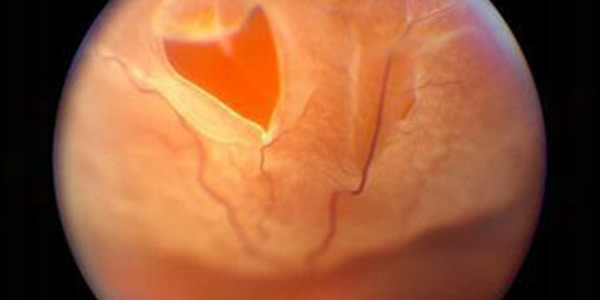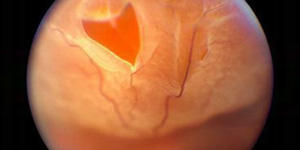Retinal Tear Treatment Specialist
A patient suffering from an acute retinal tear may notice the appearance of black patches or “floaters” in the affected eye. This can give the impression that someone is shaking pepper in your eyes. Another typical symptom is flashes of light (photopsia). If a vitreous hemorrhage (bleeding in the transparent cavity of the eye) or retinal detachment is present, additional symptoms may include impaired vision or a shadow as if curtains were closing in from the peripheral (side) view. A retinal tear, on the other hand, may not cause any obvious symptoms in some circumstances. Retinal tear treatment has an excellent success rate when performed promptly. Retinal tear treatment specialists are available at Connecticut Retina Consultants. Contact us for more information. We serve patients at locations in Hamden, New Haven, Madison, Trumbull, Fairfield, and Norwalk CT.




Table of Contents:
Can a retinal tear heal on its own?
What are the symptoms of a retinal tear?
How are retinal tears treated?
What is the most frequent cause of a retinal tear?
Retinal Tears are localized areas of retinal injury resulting from traction on the retinal surface from the overlying vitreous gel usually associated with a posterior vitreous detachment or trauma. In the area of the tear, there is a defect in the retina such that the underlying pigment layer is directly exposed to the vitreous cavity. This opening can lead to detachment of the retina.
How are retinal tears treated?
All tears that are new or any tear associated with sudden new symptoms of flashes and or floaters require prompt treatment. The object of treatment for a retinal tear is to seal the edges of the tear to prevent fluid from passing through the tear and extending beneath the retina leading to detachment. The usual way such an adhesion is formed is by creating a circle of small scars around the tear with a laser. Sometimes if the view of the retina is so poor, i.e. from a dense cataract or from blood in the vitreous cavity, the adhesion is created by performing freezing treatment (called cryopexy) from the outside of the eye with a cryoprobe.

Additional Treatments You May Like

Additional Treatments You May Like
- Macular Degeneration
- Scleral Buckling
- Uveitis
- Macular Edema
- Photodynamic Therapy (PDT)
- Degenerative Myopia
- Laser Photocoagulation
- Retinal Detachment
- Diabetic Retinopathy
- Lattice Degeneration
- Pneumatic Retinopexy
- OCT
- BRVO
- Inherited Retinal Disorders
- Macular Hole
- Flashes and Floaters
- Macular Pucker
- Angiography
- CRVO
- Cryotherapy
- Retinal Artery Occlusion
- Intravenous Fluorescein Angiogram
- Retinal Tear
- Vitrectomy
- AMD
- Intravitreal Injections
- Complications After Cataract Surgery
- CSCR
- Pars Plana Vitrectomy




